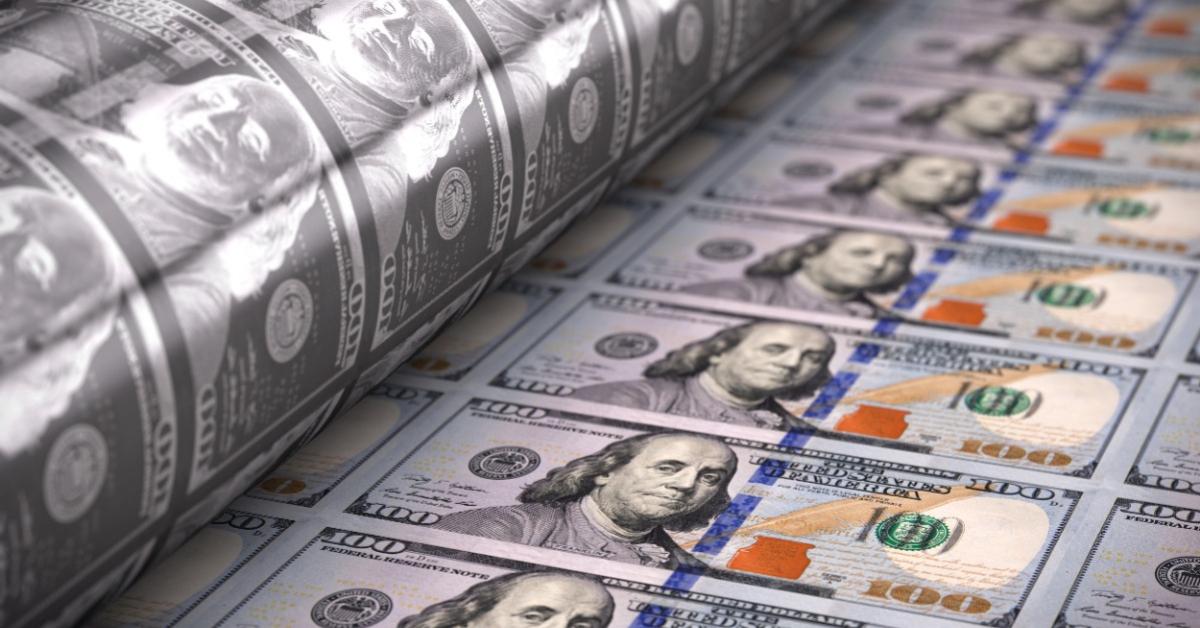
The Modern State Cannot Exist without Fiat Money
The emergence of money is a market phenomenon. By surrendering fewer marketable goods for more marketable goods, individuals move closer to the goods they ultimately wish to consume but cannot acquire through direct exchange. The most marketable goods become common media of exchange (i.e., money).
With money on one side of every transaction, the number of relevant prices is reduced, the division of labor expands, and specialization in the stages of production becomes possible. The basic function of money, then, is to facilitate exchange. Contrary to this purpose, the substitution of national paper currencies for commodity money has made trade more difficult.
Hans-Hermann Hoppe has described this as a system of partial barter. With this understood, the purpose of global fiat money may be said to be entirely different.
Under a commodity money standard, such as gold, the state’s power is limited. Ludwig von Mises explains that
the excellence of the gold standard is to be seen in the fact that it renders the determination of the monetary unit’s purchasing power independent of the policies of governments and political parties. Furthermore, it prevents rulers from eluding the financial and budgetary prerogatives of the representative assemblies.
However, once the state controls the monetary system, it can issue its own paper notes. The paper notes are accepted because they represent a claim to commodity money with established purchasing power. While the state is obliged to redeem its notes, its inflationary power is ostensibly limited.
The purpose of fiat money is to remove this limitation in order to increase government spending. To illustrate this, we will review some of the major events that transformed the US from a limited, decentralized confederation into a large, centralized state. As we shall see, these events coincided with steps toward a pure fiat currency.
Thomas DiLorenzo has convincingly argued that Lincoln’s presidency laid the foundation for the modern welfare-warfare state. Most significantly, the War Between the States crushed the right of secession, thereby removing the means by which the states could check federal power. In order to fund the war, however, new sources of revenue were needed. To this end, the Revenue Acts of 1861 and 1862 imposed the first federal income tax on Americans and established an internal-revenue bureaucracy.
Still, there’s only so much direct taxation citizens will tolerate. Consequently, the Legal Tender Act of 1862 was passed empowering the secretary of the treasury to issue inconvertible “greenbacks.” The National Banking Acts of 1863 and 1864 then created a system of nationally chartered banks. Such a system was inherently inflationary and the greenbacks depreciated rapidly.
The income tax eventually expired in 1872, and the Specie Payment Resumption Act of 1875 paved the way for a gold standard. However, there was now a precedent for an income tax and a nationalized paper currency. Moreover, the Pacific Railroad Acts of 1862 had provided direct federal subsidies for the construction of a transcontinental railroad.
Government subsidies led to much corruption and inefficiency and, as Misesians would expect, these effects led to calls for further intervention. Thus, the Interstate Commerce Act of 1887 established the first federal regulatory agency in US history and the Sherman Antitrust Act followed three years later.
This increased regulation of the economy was ushered in with the Progressive Era, which culminated in 1913 with the establishment of a central bank and the income tax as permanent institutions. While the top marginal tax rate began at 6 percent, by 1918 it had soared to 77 percent following US entry into the First World War. Wartime inflation was followed by a depression in 1920, but a relatively laissez-faire response allowed for a speedy recovery by the middle of 1921.
Nevertheless, by early 1922, the Federal Reserve had once again embarked upon an inflationary policy that would only level off at the end of 1928. This fueled an inflationary boom but culminated in the October 1929 stock market crash.
A year after the crash, the economic crisis was no more severe than the 1920 depression had been. However, President Herbert Hoover would pursue an unprecedented interventionist program of high wage rates and expanded investment, farm subsidies, public works, and a policy of cheap money and credit expansion. Hoover’s interventions further aggravated the depression, and he was defeated in the 1932 election by Franklin Roosevelt (FDR).
Nevertheless, Roosevelt’s New Deal would expand upon his predecessor’s programs, but not before he officially took the United States off the gold standard. With American citizens no longer able to redeem dollars in gold, one of the major checks on the federal government’s inflationary power had been removed.
Roosevelt would subsequently cartelize industry and agriculture, empower labor unions, spend billions on public works, and establish a federal welfare state with programs such as Social Security, minimum wage laws, and national unemployment insurance. As Robert Higgs points out, this was “the largest peacetime expansion of federal government power in [the 20th] century.”
However, FDR’s expansion of power would not be limited to peacetime, and the Second World War established the US as the dominant world power. Thus, in 1944—toward the end of the war—a conference was convened in Bretton Woods, New Hampshire, to establish a new global monetary system with the US dollar as the reserve currency. Under the Bretton Woods Agreement, only foreign governments and central banks could redeem dollars in gold. The US would pyramid dollars on top of gold while European countries pyramided their currencies on top of dollars.
The United States began the postwar era with an undervalued dollar and a large stock of gold. However, as the US continued its inflationary policy, the purchasing power of the dollar declined and gold flowed out of the US. By the mid-1960s, Bretton Woods was beginning to unravel. Simultaneous with the war in Vietnam was the expansion of the welfare state by Lyndon Johnson’s Great Society programs. To finance these expenditures, the government resorted to unprecedented inflation.
But as the amount of dollars increased rapidly, European governments grew dissatisfied with subsidizing an overvalued dollar and opted to redeem dollars in gold. This accelerated the flow of gold out of the US until the US severed the dollar’s final link to gold in August, 1971.
Bretton Woods was replaced by the Smithsonian Agreement in December, 1971, but this system proved unworkable. After a little more than a year, it was replaced by the system of pure fiat currencies and fluctuating exchange rates that remains in place today. By this time, the welfare-warfare state as we know it had been established.
It should be clear that the ability to increase government spending by issuing its own paper notes enabled the large expansion of US government power. However, a national currency backed by a commodity is still controlled by the state. The state can therefore suspend the commodity-based standard whenever its fiscal needs require it. Thus, the classical gold standard could not prevent the establishment of the modern leviathan. Indeed, Ryan McMaken argues that by solidifying state control over the monetary system, the classical gold standard set the stage for floating fiat currencies.
Only if we return to private commodity money can we repeal the twentieth century. If we fail to do so, any hopes of limiting government power will remain illusory.



